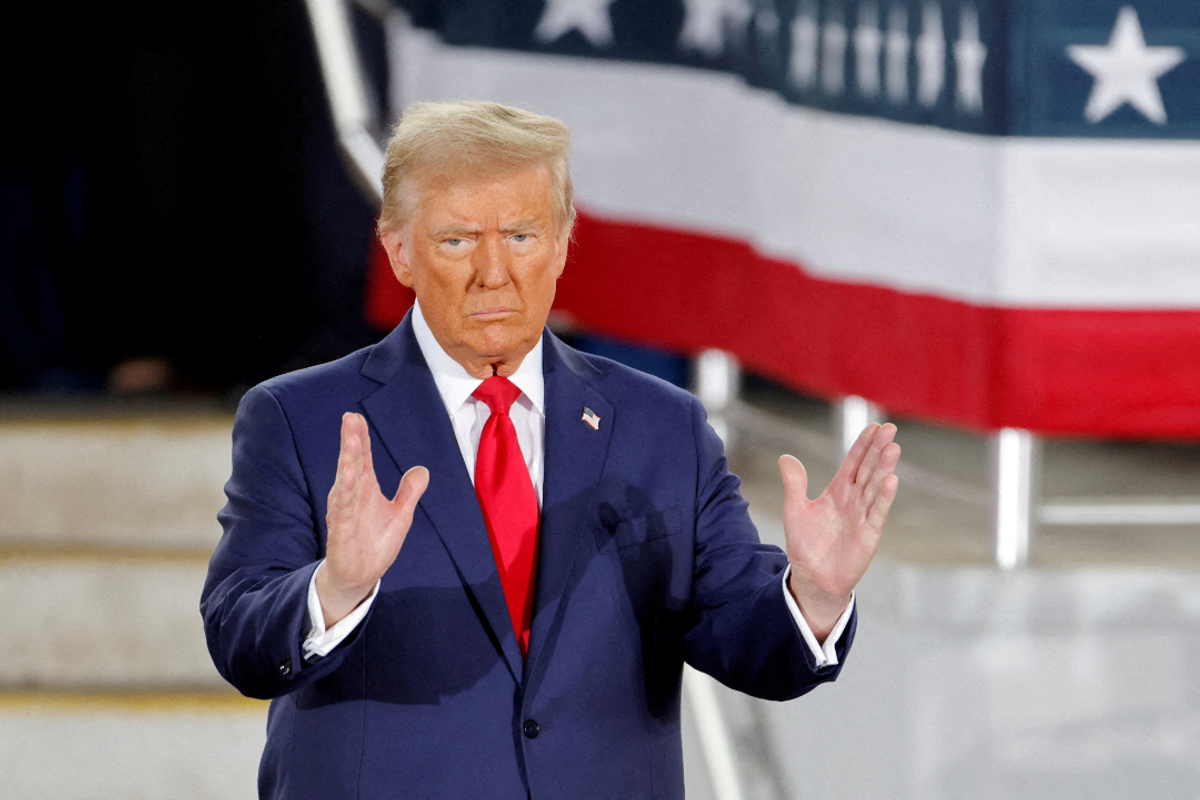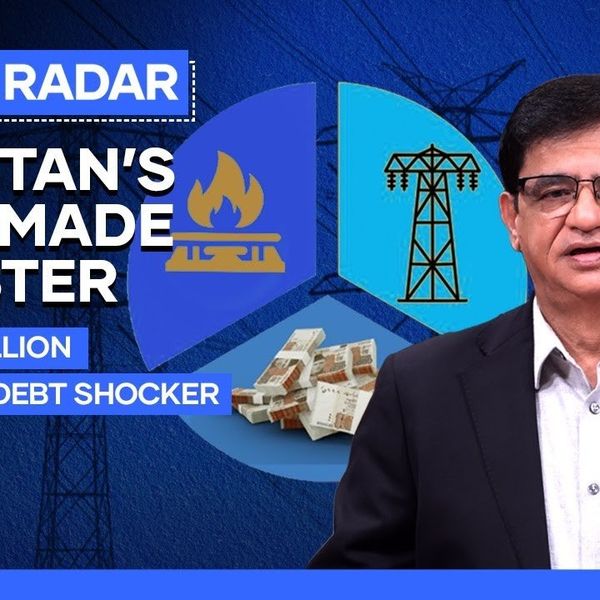A mixed bag: which direction will oil prices go in Trump term 2.0?
Nukta analyzes the impact of Trump's re-election on international oil prices
Nida Gulzar
Research Analyst
A distinguished economist with an M. Phil. in Applied Economics, Nida Gulzar has a strong research record. Nida has worked with the Pakistan Business Council (PBC), Pakistan Banks' Association (PBA), and KTrade, providing useful insights across economic sectors. Nida continues to impact economic debate and policy at the Economist Intelligence Unit (EIU) and Nukta. As a Women in Economics (WiE) Initiative mentor, she promotes inclusivity. Nida's eight 'Market Access Series papers help discover favourable market scenarios and export destinations.

Former US President Donald Trump campaigns at Dorton Arena, in Raleigh
Reuters
As global markets continue to adjust to Donald Trump's re-election as the 47th United States president, Nukta analyzes the impact on international oil prices.
Trump, who has long been known for his support for increasing domestic energy independence, has continuously pushed for more US production of natural gas and oil, which is expected to drive down the price of crude oil globally. Additionally, he aims to take a non-interventionist stance or advocate for the de-escalation of various international conflicts, which would support lower oil prices internally as well.
Drill, Baby, Drill!’ — how oil and gas companies are banking on Trump
Trump's rhetoric during his election campaign signals market optimism surrounding fossil fuel investments as investors anticipate policies that would favor oil and gas industries. This has led to a surge in market confidence for traditional energy, while renewable energy companies have faced setbacks. For instance, First Solar, a major US solar company, saw a drop of over 10% the day after the presidential election.
In September, Trump announced plans to cut any unused funds from the Inflation Reduction Act (IRA), calling the law’s provisions — such as grants, loans, and rebates for renewable energy and electric vehicle (EV) infrastructure — too costly. His stance reflects a broader expectation that his second term would likely emphasize support for oil and gas sectors over renewables, suggesting that traditional energy could see growth while renewable energy initiatives might struggle under his administration.
The day after the election results were released, US markets hit record highs in the wake of Donald Trump's victory. The Nasdaq Composite climbed 3.0%, and the S&P 500 rose 2.5%. Tesla saw a 15% increase in its stock price, while Trump Media & Technology Group gained 6%. The VIX, which tracks market volatility, dropped 4.2 points to 16.3, its lowest level in six weeks. Additionally, the yield on the 10-year Treasury notes surged by 16 basis points, marking its largest one-day increase since April this year.
Further Iran sanctions?
The Trump administration has imposed more than 1,500 sanctions on Iran or foreign businesses or persons that were involved with Iran between 2018 and 2024 with regards to nuclear, missile, and terrorism-related developments, and cyber, human rights, and defense.
"If Trump implements additional sanctions, it will not have a significant impact because Iran's oil exports and production have reached multi-year highs. If we look at the physical markets for oil, the supply remains higher than the demand, which may have a muted effect because sanctions have become redundant and useless these days. If we look at Russia's scenario, they still have expanded oil and gas quantities, and the oil price cap and everything else have never been an issue," Syed Osama Rizvi, Energy and Economic Analyst at Primary Vision a US-based consultancy firm that specializes in oil and gas markets told Nukta.
"Second, the majority of energy inputs have now begun to flow to the East, allowing the eastern market to accommodate Iran significantly. Although, China is always a biggest buyer of Iranian oil, they never considered sanctions an issue," he added.
Iran's crude oil exports surged to 1.5 million barrels per day in 2024, hitting a six-year high since the imposition of full US sanctions in May 2019. According to Vortexa, a market intelligence company, "an increase in Iran's crude production, higher demand from China and a net increase in the size of the country's dark fleet have helped facilitate its oil export growth."
What about risk scenarios?
World Bank outlook
According to the World Bank’s recently released commodity outlook, crude oil prices are expected to fall by 10% in 2025. Other institutions have also reduced their averages down to $73 per barrel for brent and $71 per barrel for the West Texas Intermediate (WTI).
The global oil supply is expected to exceed demand by 1.2 million barrels per day and this has happened only twice before in 1998 and 2020 during COVID-19. This will lead to a potential drop of crude oil prices to below $60 per barrel.
Impact on Pakistan
Iran and Pakistan agreed in 2010 to implement a project envisaging the supply of 750 million cubic meters per day of gas for 25 years through a new pipeline running from Iran's giant South Pars gas field to Gwadar on Pakistan's south‑west coast. However, the initiative's on‑off fate has always been tied up with the parties' fluctuating relations with the US.
Stronger ties notwithstanding, Pakistan will face an escalating cost of conducting business with Iran, given the regime of sanctions in place against the neighboring country. The US has already issued a warning regarding the possibility of attracting sanctions for engaging in business transactions with Iran.
"Pakistan is an import-based economy. We can expect a war of words once again between Trump and Iran because one of the biggest focuses of Trump is that he wants to sort of scapegoat Iran. If that happens due to the war of words, we can expect more bullishness in the oil market raised concerns regarding an eminent geopolitical crisis which will feed into the now geopolitical war risk premium.," Rizvi commented.
The premium, coupled with an inflationary shock, will tend to increase energy prices in terms of oil and gas. With Pakistan being an import-based economy that imports around 85% of its oil, it will be a negative development for the economy as the country is already going through some form of economic crisis.
Prices and monthly inflation
Direct oil price impact is never too significant. It is always the second-order impact that increases inflation.
Other than inflation, there could be a visible impact on Pakistan's external account. If oil prices take a dip of $5 per barrel, the country's current account deficit could see a change of $1 billion. This impact is 9% of the foreign exchange reserves.
Oil prices directly impact the 6% weighted transport segment of the inflation basket, and a $5 per barrel decline could reduce inflation by 22 basis points. However, this only reflects the direct impact, with the overall effect — including second-round impacts — likely to be greater. In October, the transport index saw a 1.53% decline, driven by lower oil prices.
Import bill - hit or potential benefit?
Pakistan's petroleum imports account for 30% of its total imports. The country spends 55% of what it earns through its exports to finance these petroleum imports. This makes them a significant driver of the trade deficit and current account deficit.
Analysis suggests that for every $5 per barrel drop or increase in oil prices, Pakistan's annual oil import bill could decrease or increase by $1 billion, with potential savings or hits doubling if oil prices fall or increase by $10 per barrel.










Comments
See what people are discussing